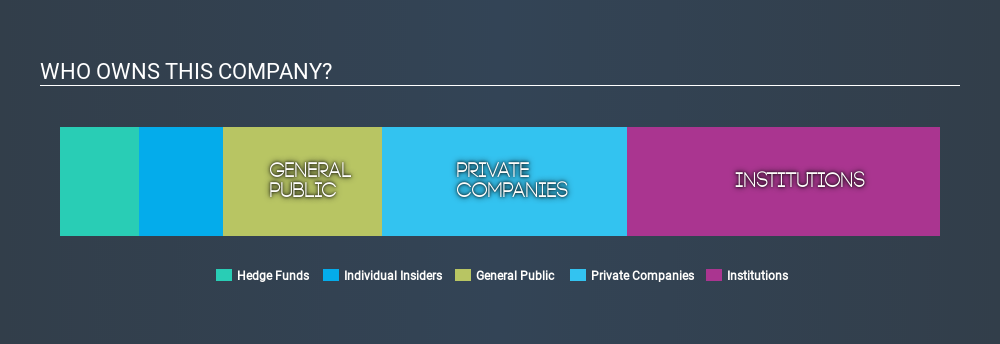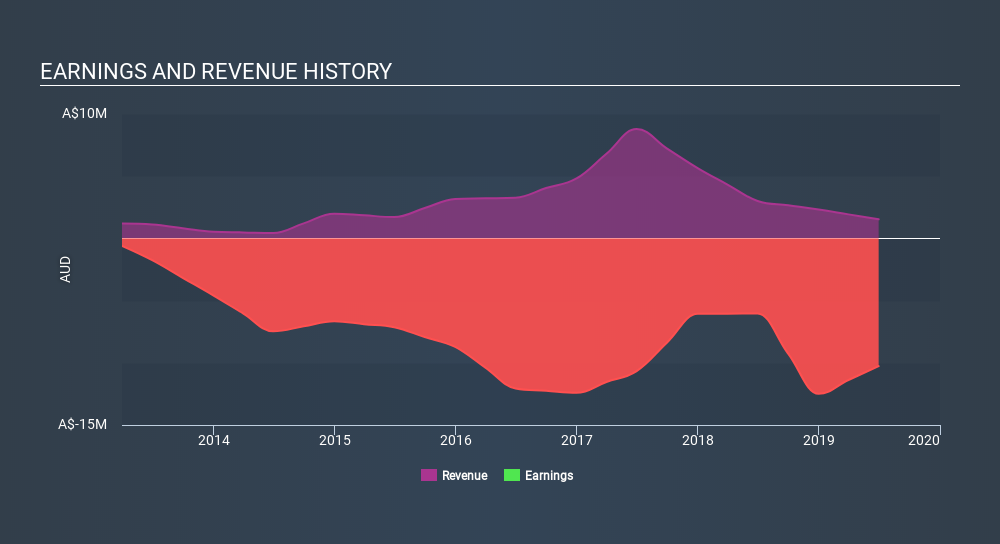How Much Of Kazia Therapeutics Limited (ASX:KZA) Do Insiders Own?

Every investor in Kazia Therapeutics Limited (ASX:KZA) should be aware of the most powerful shareholder groups. Generally speaking, as a company grows, institutions will increase their ownership. Conversely, insiders often decrease their ownership over time. I generally like to see some degree of insider ownership, even if only a little. As Nassim Nicholas Taleb said, 'Don’t tell me what you think, tell me what you have in your portfolio.
Kazia Therapeutics is not a large company by global standards. It has a market capitalization of AU$47m, which means it wouldn't have the attention of many institutional investors. In the chart below, we can see that institutions are noticeable on the share registry. Let's take a closer look to see what the different types of shareholder can tell us about Kazia Therapeutics.
Check out our latest analysis for Kazia Therapeutics

What Does The Institutional Ownership Tell Us About Kazia Therapeutics?
Many institutions measure their performance against an index that approximates the local market. So they usually pay more attention to companies that are included in major indices.
As you can see, institutional investors own 36% of Kazia Therapeutics. This can indicate that the company has a certain degree of credibility in the investment community. However, it is best to be wary of relying on the supposed validation that comes with institutional investors. They too, get it wrong sometimes. When multiple institutions own a stock, there's always a risk that they are in a 'crowded trade'. When such a trade goes wrong, multiple parties may compete to sell stock fast. This risk is higher in a company without a history of growth. You can see Kazia Therapeutics's historic earnings and revenue, below, but keep in mind there's always more to the story.

It looks like hedge funds own 9.1% of Kazia Therapeutics shares. That catches my attention because hedge funds sometimes try to influence management, or bring about changes that will create near term value for shareholders. The company's largest shareholder is BNY Mellon Asset Management, with ownership of 26%, Next, we have Hishenk Pty Ltd. and Willoughby Capital Trust as the second and third largest shareholders, holding 16% and 10%, of the shares outstanding, respectively.
Further, we found that the top 3 shareholders have a combined ownership of 52% in the company, meaning that they are powerful enough to influence the decisions of the company.
While studying institutional ownership for a company can add value to your research, it is also a good practice to research analyst recommendations to get a deeper understand of a stock's expected performance. There is some analyst coverage of the stock, but it could still become more well known, with time.
Insider Ownership Of Kazia Therapeutics
The definition of company insiders can be subjective, and does vary between jurisdictions. Our data reflects individual insiders, capturing board members at the very least. The company management answer to the board; and the latter should represent the interests of shareholders. Notably, sometimes top-level managers are on the board, themselves.
I generally consider insider ownership to be a good thing. However, on some occasions it makes it more difficult for other shareholders to hold the board accountable for decisions.
I can report that insiders do own shares in Kazia Therapeutics Limited. As individuals, the insiders collectively own AU$4.5m worth of the AU$47m company. There's no doubt that we learn useful information from looking at a company's ownership structure and shareholders. But ultimately, many risks exist within the business itself, rather than its shareholders. For example, we've discovered 6 warning signs for Kazia Therapeutics (of which 1 is major) which any shareholder or potential investor should be aware of.
General Public Ownership
With a 18% ownership, the general public have some degree of sway over KZA. While this size of ownership may not be enough to sway a policy decision in their favour, they can still make a collective impact on company policies.
Private Company Ownership
We can see that Private Companies own 28%, of the shares on issue. It's hard to draw any conclusions from this fact alone, so its worth looking into who owns those private companies. Sometimes insiders or other related parties have an interest in shares in a public company through a separate private company.
Next Steps:
While it is well worth considering the different groups that own a company, there are other factors that are even more important.
Many find it useful to take an in depth look at how a company has performed in the past. You can access this detailed graph of past earnings, revenue and cash flow.
If you are like me, you may want to think about whether this company will grow or shrink. Luckily, you can check this free report showing analyst forecasts for its future.
NB: Figures in this article are calculated using data from the last twelve months, which refer to the 12-month period ending on the last date of the month the financial statement is dated. This may not be consistent with full year annual report figures.
If you spot an error that warrants correction, please contact the editor at editorial-team@simplywallst.com. This article by Simply Wall St is general in nature. It does not constitute a recommendation to buy or sell any stock, and does not take account of your objectives, or your financial situation. Simply Wall St has no position in the stocks mentioned.
We aim to bring you long-term focused research analysis driven by fundamental data. Note that our analysis may not factor in the latest price-sensitive company announcements or qualitative material. Thank you for reading.
About ASX:KZA
Kazia Therapeutics
Operates as an oncology-focused biotechnology company in South Korea.
Good value with adequate balance sheet.
Market Insights
Community Narratives


